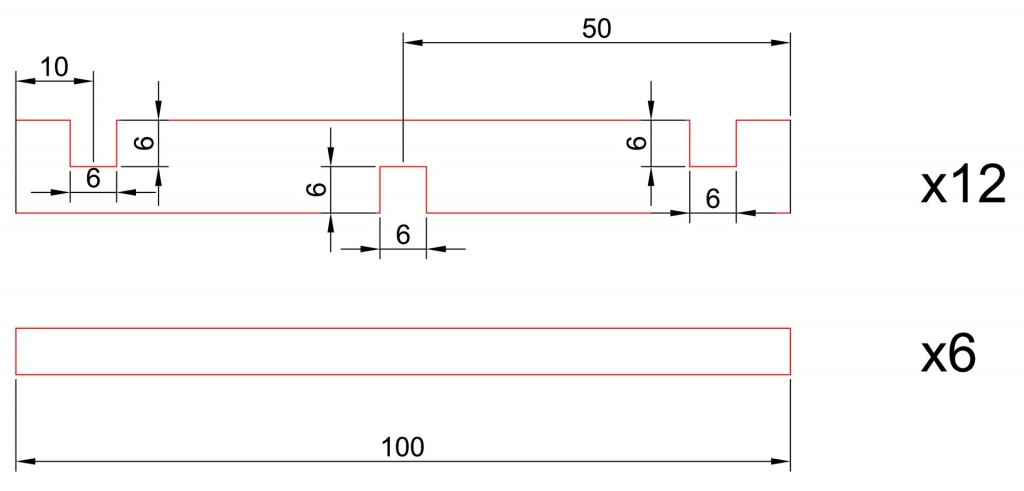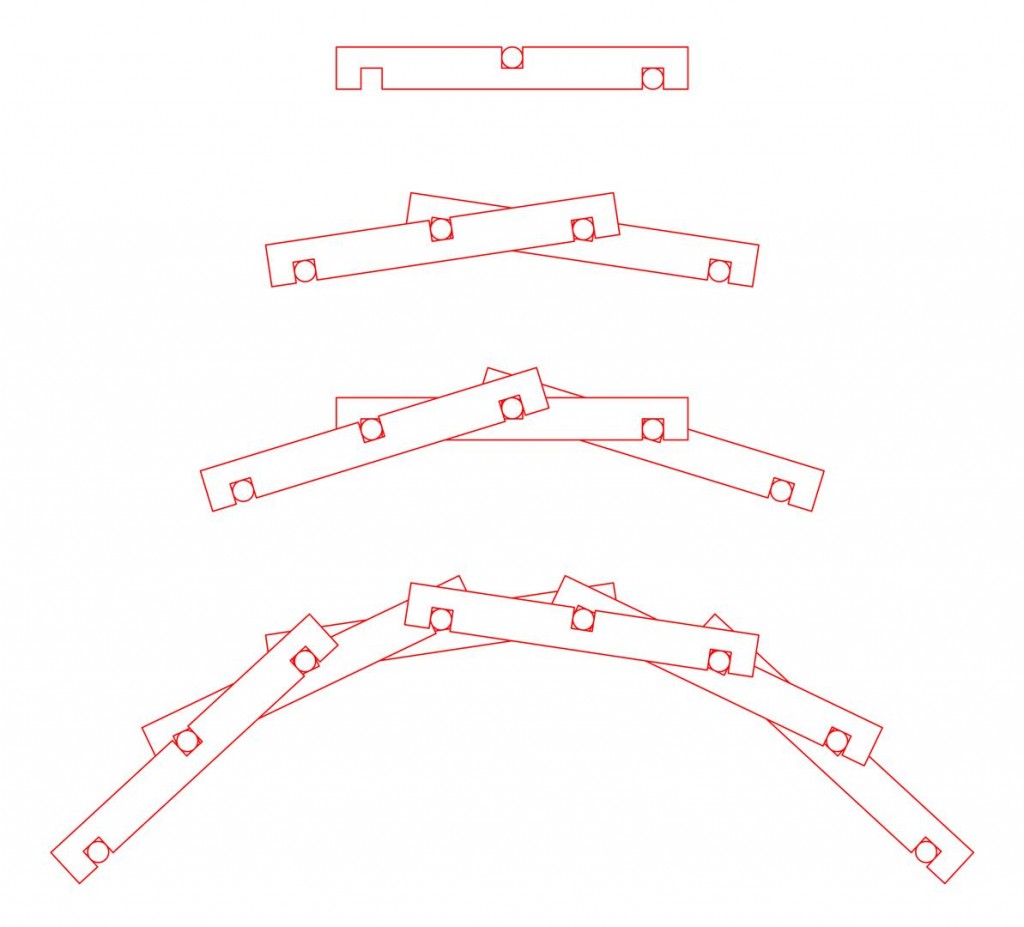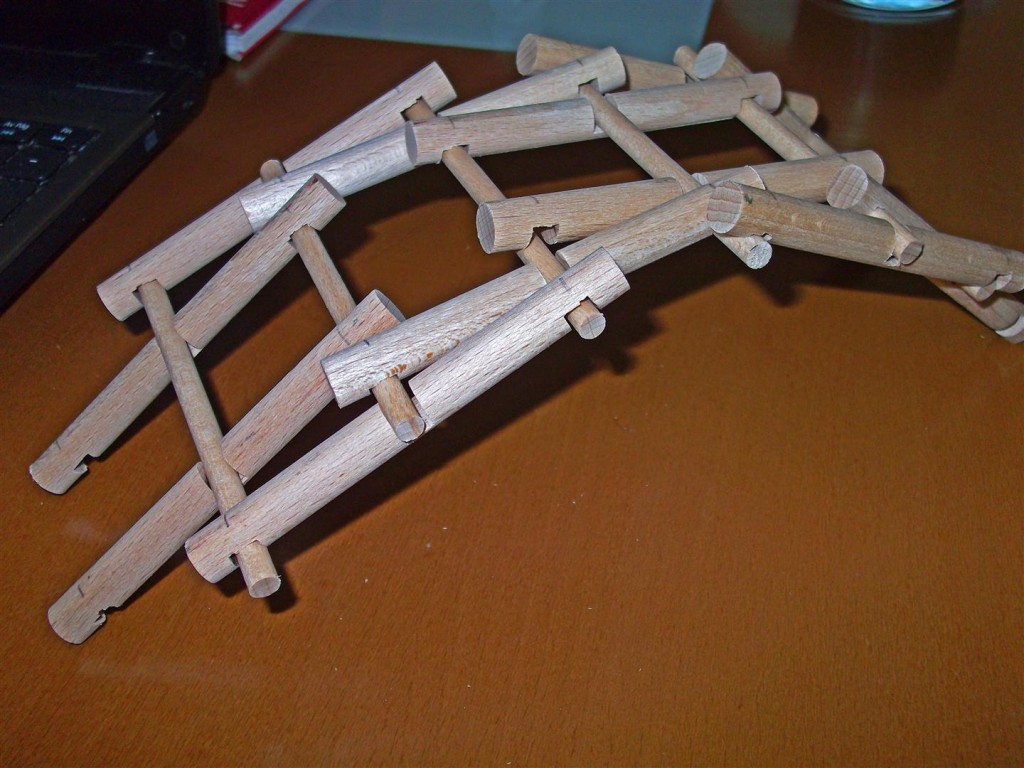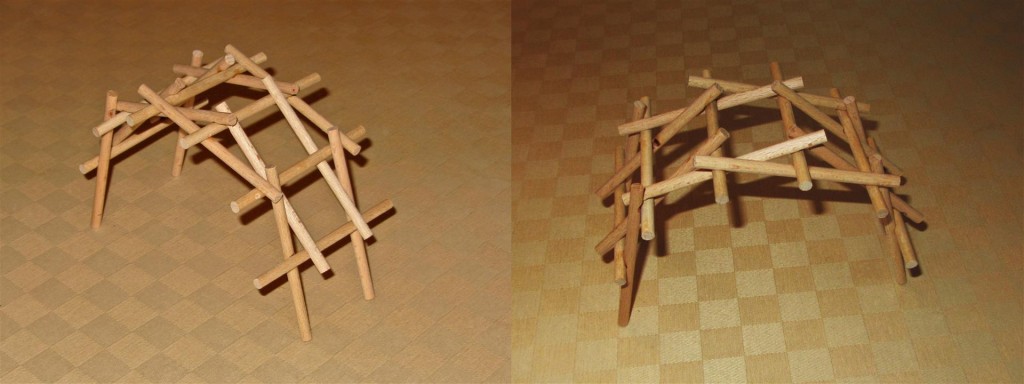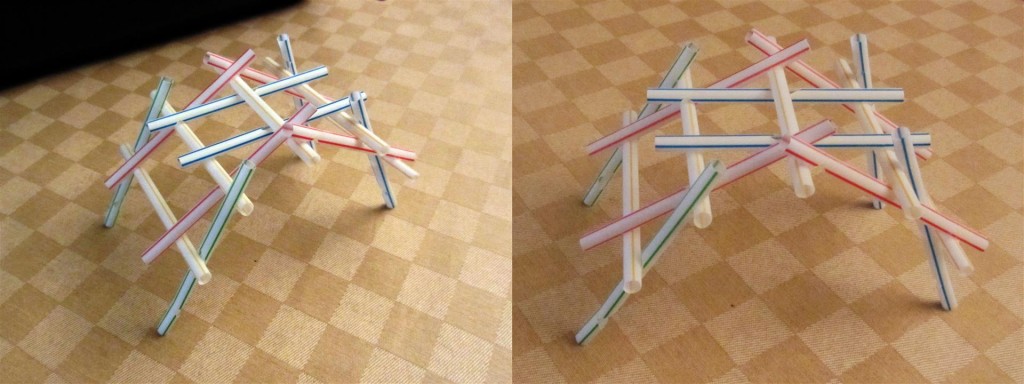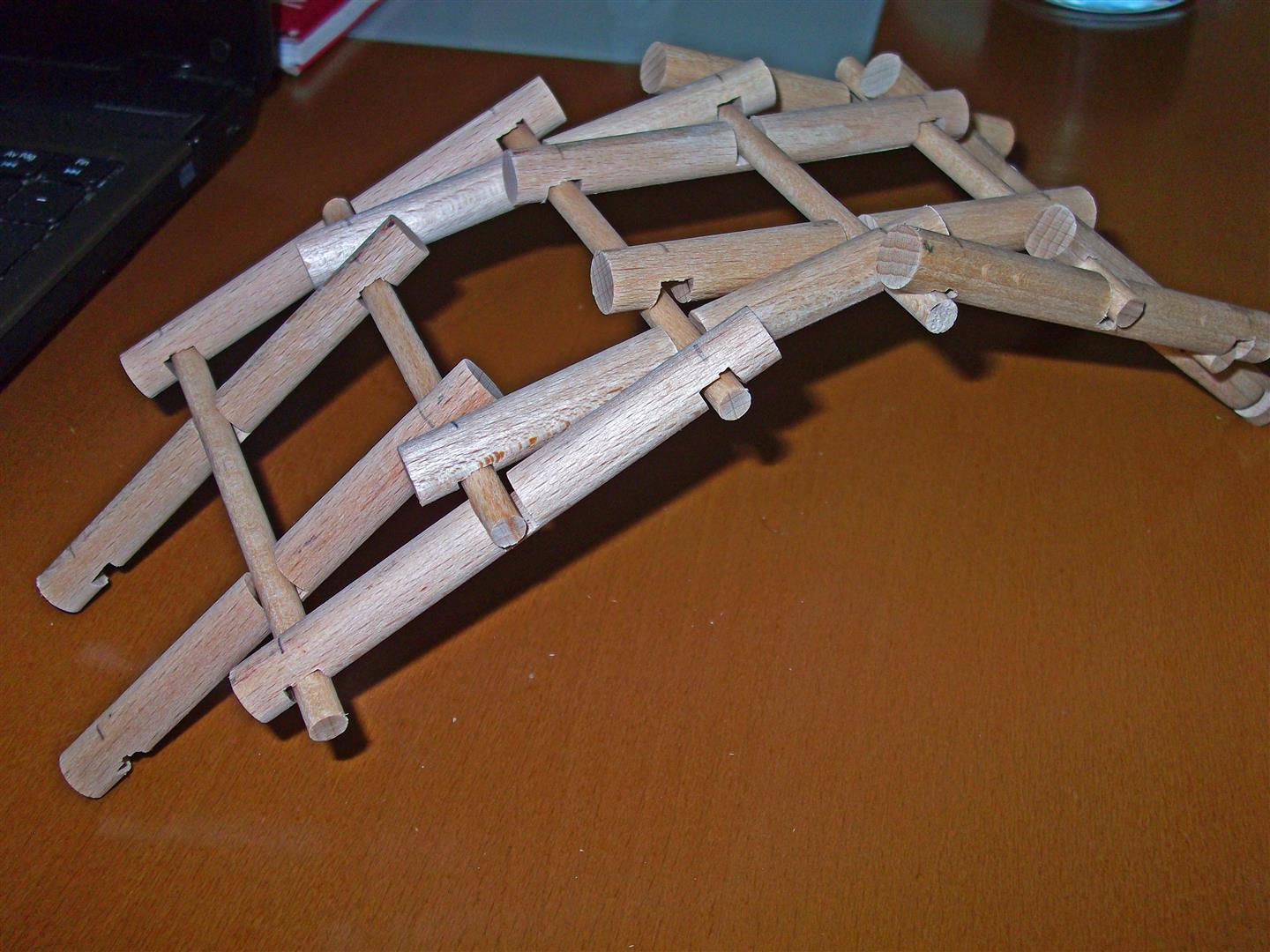
Here’s a quick craft to spend the afternoon and if you Seize children to enjoy learning, there is no question of giving them a kind of strength of materials …. but something remains.
Browsing as usual on the internet, and as usual, looking for something else, I went to give this blog a technology teacher:
http://pelandintecno.blogspot.com.es/2013/01/puente-autoportante-de-leonardo-da.html
Our compliments to the author of this blog, I wish all teachers (thankfully we know many cases) cared so much for making children understand the concepts of such an interesting way.
The bridge in question designed by Leonardo da Vinci, appears in Codex Atlanticus, Volume 1. pages 69r and 71v. (1483 – 1518 Ambrosian library in Milan). It is a bridge designed for war, lightweight, whose main characteristic is that it holds only for the charge distribution sleepers enter ingeniously fitted together, without ties or nails.
This is the picture that has come down to us: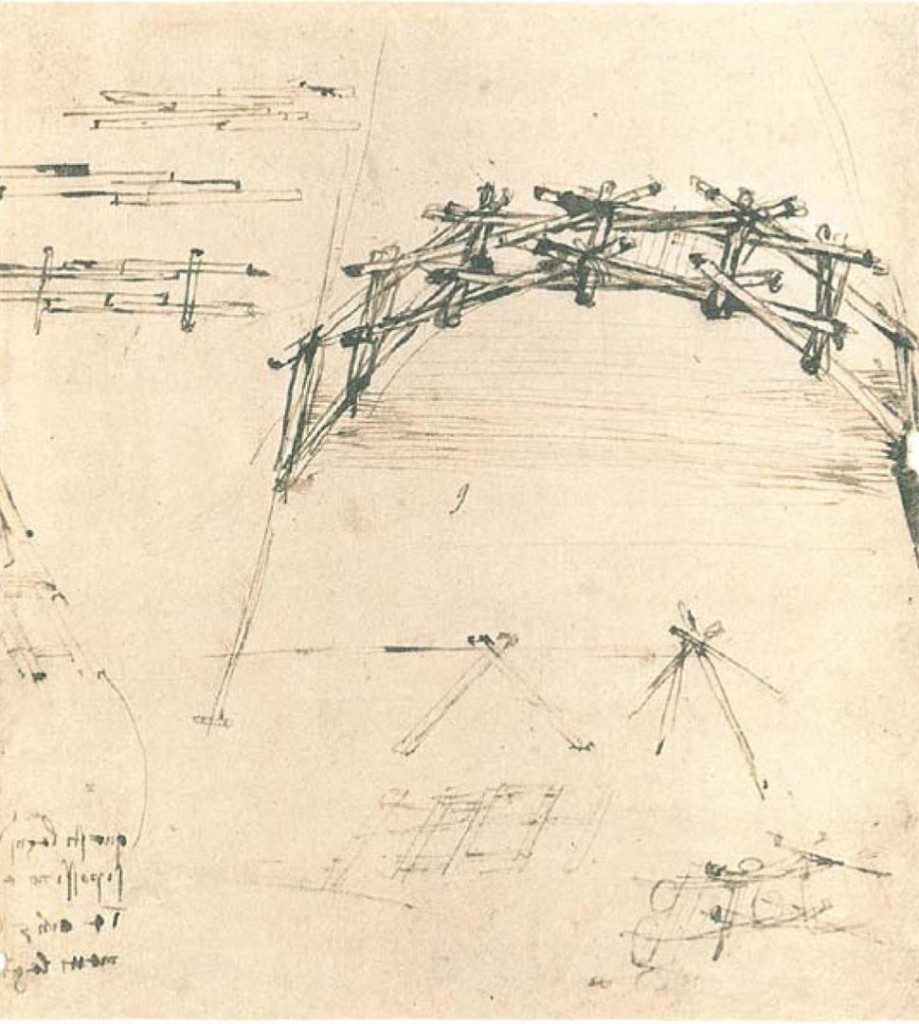
Here’s a drawing with the necessary parts:
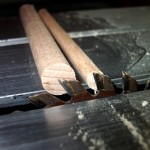 I used two strips of circular section 12 and 6 mm in diameter. To make the holes I used the circular saw blade placing 6 mm space that it might be necessary for the “rungs” without cutting the whole piece.
I used two strips of circular section 12 and 6 mm in diameter. To make the holes I used the circular saw blade placing 6 mm space that it might be necessary for the “rungs” without cutting the whole piece.
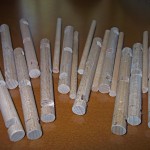 Although it’s relatively simple, in the case of using all the slats cylindrical We must be careful to cut at diametrically opposite points, because if we deviate, the pieces will not fit, so it would be easier to start with the pieces that make of “legs” are of square section. They can be cut with hacksaw and retouch them with a file.
Although it’s relatively simple, in the case of using all the slats cylindrical We must be careful to cut at diametrically opposite points, because if we deviate, the pieces will not fit, so it would be easier to start with the pieces that make of “legs” are of square section. They can be cut with hacksaw and retouch them with a file.
In my case I used the circular machine, to make it faster
Here a sketch of the assembly:
I have to apologize for the quality of the photos, at first I did this as a personal entertainment and not properly documented.
And the bridge assembled:
Later I decided to make it with all the pieces of the same diameter because it seemed a more elegant solution. In this case we can not make the cuts deep enough to fit the whole cross parts, only a half, so that besides being a clever example of load distribution becomes a fun pastime when mounting, as a house of cards.
Leonardo designed the bridge for war, as it was easy to assemble and take advantage of the surprise element. For us it is a toy that helps us to exercise our manual skills and our patience.
A friend who wanted to do it with her toddler that is too young to use saws (apart from that we don’t have wooden sticks at home every day), She wondered if we could make it with soda straws. So here you see that its possible, so there is no excuse for making it and have a fun time. (I made Cuts to fit the “steps” with scissors and V-shaped).
